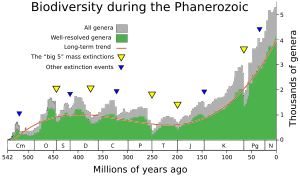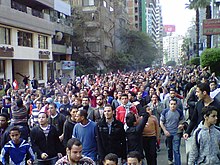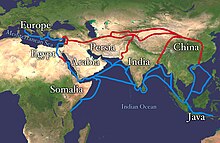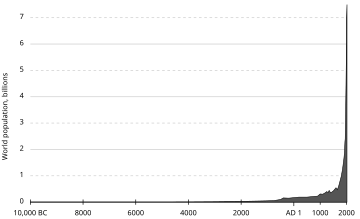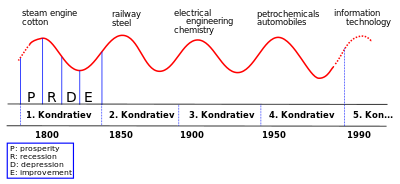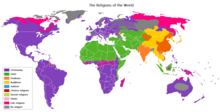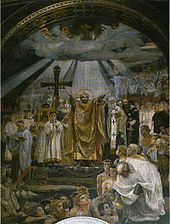Andrey Korotayev
- Director, Chief Research Fellow: Faculty of Social Sciences / Centre for Stability and Risk Analysis
- Andrey Korotayev has been at HSE University since 2001.
Education, Degrees and Academic Titles
Institute of Oriental Studies of the Russian Academy of Sciences
Thesis Title: Political Organization of the Sabaean Cultural Area
Lomonosov Moscow State University
According to the International Standard Classification of Education (ISCED) 2011, Candidate of Sciences belongs to ISCED level 8 - "doctoral or equivalent", together with PhD, DPhil, D.Lit, D.Sc, LL.D, Doctorate or similar. Candidate of Sciences allows its holders to reach the level of the Associate Professor.
A post-doctoral degree called Doctor of Sciences is given to reflect second advanced research qualifications or higher doctorates in ISCED 2011.
Academic Contributions
Mathematical modeling and cliodynamics
Global dynamics
In this field he has proposed one of the most convincing mathematical explanations for von Foerster's Doomsday Equation.] In collaboration with his colleagues, Artemy Malkov and Daria Khaltourina, he has shown that till the 1970s the hyperbolic growth of the world population was accompanied by quadratic-hyperbolic growth of the world GDP, and developed a number of mathematical models describing both of these phenomena simultaneously; he has also described mathematically the World System withdrawal from the blow-up regime observed in the recent decades.
The hyperbolic growth of the world population and quadratic-hyperbolic growth of the world GDP observed till the 1970s have been correlated by him and his colleagues to a non-linear second order positive feedback between the demographic growth and technological development that can be spelled out as follows: technological growth - increase in the carrying capacity of land for people - demographic growth - more people - more potential inventors - acceleration of technological growth - accelerating growth of the carrying capacity - the faster population growth - accelerating growth of the number of potential inventors - faster technological growth - hence, the faster growth of the Earth's carrying capacity for people, and so on.
He has also shown that the world urban population growth curve has also up till recently followed a quadratic-hyperbolic pattern. In addition, Korotayev and his colleagues have proposed a number of forecasts of the World System development up to 2100.
Social and biological macroevolution
In collaboration with Alexander V. Markov he has demonstrated that a similar mathematical model can be developed to describe the macrotrends of biological evolution. They have shown that changes in biodiversity through the Phanerozoic correlate much better with hyperbolic model (widely used in demography and macrosociology) than with exponential and logistic models (traditionally used in population biology and extensively applied to fossil biodiversity as well). The latter models imply that changes in diversity are guided by a first-order positive feedback (more ancestors, more descendants) and/or a negative feedback arising from resource limitation. Hyperbolic model implies a second-order positive feedback. The hyperbolic pattern of the world population growth has been demonstrated by Korotayev to arise from a second-order positive feedback between the population size and the rate of technological growth. According to Korotayev and Markov, the hyperbolic character of biodiversity growth can be similarly accounted for by a feedback between the diversity and community structure complexity. They suggest that the similarity between the curves of biodiversity and human population probably comes from the fact that both are derived from the interference of the hyperbolic trend with cyclical and stochastic dynamics.
Cliodynamics
In the field of cliodynamics, Korotayev has developed a number of mathematical models of interaction between the very long-term, "millennial" hyperbolic trend dynamics of social systems and the shorter-term, "secular" (that is, observed at the scale of centuries), cyclical dynamics.
He has also produced a number of mathematical models describing specifically long-term political-demographic dynamics of Egypt and used them for a demographic structural analysis of the 2011 Egyptian Revolution. Korotayev was one of the first to predict and assess the June 2013 Egyptian protests. Note also his recent interpretation of the Arab Spring events as a trigger of a global "phase transition".
Of special importance is his study of the hypothesis that population pressure causes increased warfare. This hypothesis has been recently criticized on the empirical grounds. Both studies focusing on specific historical societies and analyses of cross-cultural data have failed to find positive correlation between population density and incidence of warfare. Korotayev, in collaboration with Peter Turchin, has shown that such negative results do not falsify the population-warfare hypothesis. Population and warfare are dynamical variables, and if their interaction causes sustained oscillations, then we do not in general expect to find strong correlation between the two variables measured at the same time (that is, unlagged). Korotayev and Turchin have explored mathematically what the dynamical patterns of interaction between population and warfare (focusing on internal warfare) might be in both stateless and state societies. Next, they have tested the model predictions in several empirical case studies: early modern England, Han and Tang China, and the Roman Empire. Their empirical results have supported the population-warfare theory: Korotayev and Turchin have found that there is a tendency for population numbers and internal warfare intensity to oscillate with the same period but shifted in phase (with warfare peaks following population peaks). Furthermore, they have demonstrated that in the agrarian societies the rates of change of the two variables behave precisely as predicted by the theory: population rate of change is negatively affected by warfare intensity, while warfare rate of change is positively affected by population density. As Kohler and Reed put it, Korotayev and Turchin have demonstrated that "human population movements and sociopolitical strife play the roles of sometimes endogenous, sometimes exogenous, factors that on small spatial scales may seem inexplicable but which on longer temporal and wider spatial scales may have understandable rhythms".
Thus, Korotayev has demonstrated that the Malthusian trap tends to generate sociopolitical upheavals. On the other hand, he has shown that the escape from the Malthusian trap is accompanied by another "trap" generating new sociopolitical upheavals (what he calls "a trap at the escape from the trap").
Russian demographic crisis
In collaboration with Daria Khaltourina he has made a significant contribution to the study of the factors of the current Russian demographic crisis. They have demonstrated that post-Soviet Russia experiences one of the world's highest prevalence of alcohol-related problems, which contributes to high mortality rates in this region. Reduction in alcohol-related problems in Russia can have strong effects on mortality decline. They have analyzed the plausibility of application of general principles of alcohol policy translated in the Russian Federation. Korotayev and Khaltourina have shown that alcohol policy approaches could be implemented in the same ways as they have been in other countries. In addition, according to Korotayev, there should be special attention to decreasing distilled spirits consumption, illegal alcohol production, non beverage alcohol consumption, and enforcement of current governmental regulations. In late 2014 they correctly predicted the growth of mortality in Russia to start in early 2015.
Literacy and the Spirit of Capitalism
Korotayev and his colleagues have demonstrated that Protestantism has indeed influenced positively the capitalist development of respective social systems not so much through the "Protestant ethics" (as was suggested by Max Weber) but rather through the promotion of literacy.
They draw attention to the fact that the ability to read was essential for Protestants (unlike Catholics) to perform their religious duty − to read the Bible. The reading of Holy Scripture was not necessary for Catholic laymen. The edict of the Toulouse Synod (1229) prohibited Catholic laity from possessing copies of the Bible. Soon after that, a decision by the Tarragon Synod spread this prohibition to ecclesiastic people as well. In 1408, the Oxford Synod absolutely prohibited translations of the Holy Scripture. From the very beginning, Protestant groups did not accept this prohibition. Thus, Luther translated in 1522–1534 first the New Testament, and then the Old Testament, into German, so that any German-speaking person could read the Holy Scripture in his or her native language. Moreover, the Protestants viewed reading the Holy Scripture as a religious duty of any Christian. As a result, the level of literacy and education was, in general, higher for Protestants than it was for Catholics and for followers of other confessions that did not provide religious stimuli for learning literacy. Literate populations have many more opportunities to obtain and utilize the achievements of modernization than illiterate ones and display greater innovative-activity levels, which correspond with opportunities for modernization, development, and economic growth. Empirical tests performed by Korotayev and his colleagues have confirmed the presence of a rather strong and highly significant correlation between the early introduction of mass literacy and subsequent high rates of capitalist economic development.
World-system analysis
Andrey Korotayev claims that the present-day world-system ("the World System"), which in the 2nd millennium CE encompassed the whole globe, originated in the 9th millennium BCE in direct connection with the Neolithic revolution. According to Korotayev, the center of this system was originally in West Asia.
In general, Korotayev and his colleagues have suggested a rather novel approach to the world-system analysis. Within this approach the main emphasis is moved to the generation and diffusion of innovations. If a society borrows systematically important technological innovations, its evolution already cannot be considered as really independent, but should rather be considered as a part of a larger evolving entity, within which such innovations are systematically produced and diffused. The main idea of the world-system approach was to find the evolving unit. The basic idea was that it is impossible to account for the evolution of a single society without taking into consideration that it was a part of a larger whole. However, traditional world-system analysis concentrated on bulk-good movements, and core-periphery exploitation, somehow neglecting the above-mentioned dimension. However, according to Korotayev, the information network turns out to be the oldest mechanism of the World System integration, and remained extremely important throughout its whole history, remaining important up to the present. It seems to be even more important than the core-periphery exploitation (for example, without taking this mechanism into consideration it appears impossible to account for such things as the demographic explosion in the 20th century, whose proximate cause was the dramatic decline of mortality, but whose main ultimate cause was the diffusion of innovations produced almost exclusively within the World System core). This also suggests a redefinition of the World System core. Within the approach in question the core is not the World System zone, which exploits other zones, but rather the World System core is the zone with the highest innovation donor/recipient ratio, the principal innovation donor.
Korotayev suggests that the hyperbolic trend observed for the world population growth after 10000 BCE does appear to be primarily a product of the growth of the World System. The presence of the hyperbolic trend itself indicates that the major part of the entity in question had some systemic unity, and Korotayev insists that the evidence for this unity is readily available. Indeed, he shows that we have evidence for the systematic spread of major innovations (domesticated cereals, cattle, sheep, goats, horses, plow, wheel, copper, bronze, and later iron technology, and so on) throughout the whole North African – Eurasian Oikumene for a few millennia BCE. As a result, the evolution of societies of this part of the world already at this time cannot be regarded as truly independent. By the end of the 1st millennium BCE we observe a belt of cultures, stretching from the Atlantic to the Pacific, with an astonishingly similar level of cultural complexity characterized by agricultural production of wheat and other specific cereals, the breeding of cattle, sheep, and goats; use of the plow, iron metallurgy, and wheeled transport; development of professional armies and cavalries deploying rather similar weapons; elaborate bureaucracies, and Axial Age ideologies, and so on – this list could be extended for pages. A few millennia before, we would find another belt of societies strikingly similar in level and character of cultural complexity, stretching from the Balkans up to the Indus Valley outskirts. Korotayev interprets this as a tangible result of the World System's functioning.
Great Divergence and Great Convergence
Together with Leonid Grinin he has also made a significant contribution to the current Great Divergence debate. As is noted byJack Goldstone, the "new view, carefully presented and rigorously modeled by Grinin and Korotayev, provides a richer and more nuanced version of the “Great Divergence,” bridging many of the differences between the traditional and California viewpoints. Yet they go further. Amazingly, by building a model utilizing human capital (education), global population growth, and regional productivity, they show how both the Great Divergence and the recent “Great Convergence” (the economic catching up of developing countries) are phases of the same process of global modernization."
Kondratieff waves
Note also his recent research on Kondratiev waves in the world GDP dynamics that, employing spectral analysis, has confirmed their presence at an acceptable level of statistical significance.
He has also detected Kondratieff waves in the global dynamics of invention activities.
General theory of social macroevolution
In addition, it appears necessary to maintain that Korotayev's theory of the World System development suggests a novel approach to the formation of a general theory of social macroevolution. The approach prevalent in social evolutionism is based on the assumption that evolutionary regularities of simple systems are significantly simpler than the ones characteristic of complex systems. A rather logical outcome of this almost self-evident assumption is that one should first study the evolutionary regularities of simple systems and only after understanding them move to more complex ones, whereas Korotayev's findings suggest that the simplest regularities accounting for extremely large proportions of all the macrovariation can be found precisely for the largest possible system – the human world, and, hence, the study of social evolution should proceed from the detection of simple regularities of the development of the most complex systems to the study of the complex laws of the dynamics of simple social systems.
Cross-cultural studies
From a complexity perspective Korotayev's establishes a key point, that of the bifurcations of social and kinship organization that coalesced historically around the differential practices of the major world religions. It draws on the World Cultural database and the world religion as well as other variables. The Murdockian comparative approach, up to Korotayev, had developed to the point where the nonindependence of cultures was well-recognized, and ways of taking the larger configurations of cultural systems into account had been reckoned to lie, in the latest iteration, along lines of high-order proto-linguistic communities. Korotayev demonstrates the effects of breaking what might be seen as a ritual taboo of Murdockian comparison: Thou Shalt Not Code World Religion. By doing so, Korotayev releases the Murdockian spell that lingers over the comparative approach in anthropology, and goes on to demonstrate the powerful effects of world religious communities — dating from what Jaspers calls the "Axial Age" (800–200 BCE) — on the preservation and differentiation of distinctive social and political structures in Eurasia. His introduction and conclusion suggest that an objectivist natural history approach to human history, in which subjective factors are of local importance but fade out in terms of lasting effects over generations, is a valid approach to the "pre-Axial" condition of human societies, while a subjectivist history of consciousness is a necessary complement to the "post-Axial" condition. Korotayev succeeds in placing these two complementary approaches in context and showing their linkages in terms of how subjective and religious factors play out in human history alongside objective factors such as demography and ecology, each informing the other. He shows how it is impossible to arrive at valid inferential results from comparative approaches without an integration of the two, a situation he aptly calls "Galton's opportunity" for those are of century-old critiques of the comparative method. The reader will be surprised at the depth of empirical comparative findings in this short book. Following Murray Leaf's Man, Mind and Science (1974) this work is a major contribution to repair of the material/ideational rift in anthropology.
Matrilocal vs. patrilocal residence
One of his particular contributions in this field is connected with the classical anthropological issue of determinants of matrilocal versus patrilocal postmarital residence. Early theories explaining the determinants of postmarital residence (e.g., Lewis Henry Morgan, Edward Tylor, or George Peter Murdock) connected it with the sexual division of labor. However, to the moment when Korotayev's research in this field began, cross-cultural tests of this hypothesis using worldwide samples had failed to find any significant relationship between these two variables. Korotayev's tests have shown that the female contribution to subsistence does correlate significantly with matrilocal residence in general; however, this correlation is masked by a general polygyny factor. Although an increase in the female contribution to subsistence tends to lead to matrilocal residence, it also tends simultaneously to lead to general non-sororal polygyny which effectively destroys matrilocality. If this polygyny factor is controlled (e. g., through a multiple regression model), division of labor turns out to be a significant predictor of postmarital residence. Thus, Murdock's hypotheses regarding the relationships between the sexual division of labor and postmarital residence were basically correct, though, as has been shown by Korotayev, the actual relationships between those two groups of variables are more complicated than he expected.
Myths, genes, and deep history
Korotayev was also one of the pioneers (together with his colleagues) of the study of correlation between spatial distributions of folklore-mythological motifs and genetic markers, as well as linguistic and sociostructural characteristics, and produced in this area significant results with respect to the deep history reconstruction.
Unilineal descent and Christianization
Korotayev studies variables that are usually regarded as the main causes of the decline of unilineal descent organization (statehood, class stratification and commercialization), along with a variable that had never been regarded as such a cause — deep Christianization. He postulates that the traditionally accepted causes of the decline of unilineal descent organization (statehood, class stratification, commercialization) are less significant than deep Christianization. He also theorizes that the presence of unilineal descent groups correlates negatively with communal democracy and is especially strong for complex traditional societies. Korotayev concludes that, because the communal democracy correlates positively with the supracommunal one, the Christianization of Europe might have contributed to the development of modern democracy by helping to destroy unilineal descent organization in this region.
Sociopolitical systems in the Middle East
Origins of parallel-cousin marriage
Islamization, along with an area's inclusion in the 8th-century Arab-Islamic Khalifate (and its persistence within the Islamic world) has been demonstrated by Korotayev to be a strong and significant predictor of parallel cousin (Father's Brother's Daughter - FBD) marriage. He has shown that while there is a clear functional connection between Islam and FBD marriage, the prescription to marry a FBD does not appear to be sufficient to persuade people to actually marry thus, even if the marriage brings with it economic advantages. According to Korotayev, a systematic acceptance of parallel-cousin marriage took place when Islamization occurred together with Arabization.
Yemeni Studies
Korotayev has made a special contribution in this field by detecting principal trends in the evolution of Yemeni cultures through application of quantitative methods to the analysis of mass epigraphic sources in the Sabaic language. Korotayev has thereby discovered the phenomenon of consolidation of the clan organization in North-East Yemen in the late 1st millennium BCE as well as the transition from chiefdoms to tribes in early medieval Yemen. He was also the first to provide convincing evidence for the existence of matrilineal descent organization in Pre-Islamic Arabia and to suggest an adequate translation of the largest Qatabanic inscription, R 3566.
African Studies
Korotayev and his colleagues have also made significant contributions to the study of political-demographic dynamics in Subsaharan Africa, especially, the problems of the Tropical African countries' escape from the Malthusian trap.
Origins of Islam
Korotayev has also done (together with his colleagues Vladimir Klimenko and Dmitry Proussakov) a significant contribution to the study of the origins of Islam. Korotayev and his colleagues view the origins of Islam against the background of the 6th century Arabian socioecological crisis whose model is specified by Korotayev and his colleagues through the study of climatological, seismological, volcanological and epidemiological history of the period. They find that most sociopolitical systems of the Arabs reacted to the socioecological crisis by getting rid of the rigid supratribal political structures (kingdoms and chiefdoms) which started posing a real threat to their very survival.
The decades of fighting which led to the destruction of the most of the Arabian kingdoms and chiefdoms (reflected in Ayyam al-`Arab tradition) led to the elaboration of some definite "antiroyal" freedom-loving tribal ethos. At the beginning of the 7th century a tribe which would recognize themselves as subjects of some terrestrial supratribal political authority, a "king", risked to lose its honour. However, this seems not to be applicable to the authority of another type, the "celestial" one. At the meantime the early 7th century evidences the merging of the Arabian tradition of prophecy and the Arabian Monotheist "Rahmanist" tradition which produced "the Arabian prophetic movement".
According to Korotayev, the Monotheist "Rahmanist" prophets appear to have represented a supratribal authority just of the type many Arab tribes were looking for at this very time, which seems to explain to a certain extent those prophets' political success (including the extreme political success of Muhammad).
Awards and Accomplishments
- Best Teacher — 2024
Responsibilities
- Direct management of the Center's activities and responsibility for the performance of functions and tasks assigned to the unit.
- Solving issues of financial and logistical support for the Center's activities. Development of the Center's development strategy.
- Coordination of the work of the scientific groups of the Center.
- Management of the scientific seminar of the Center.
- Performing research on the subject of the Center.

